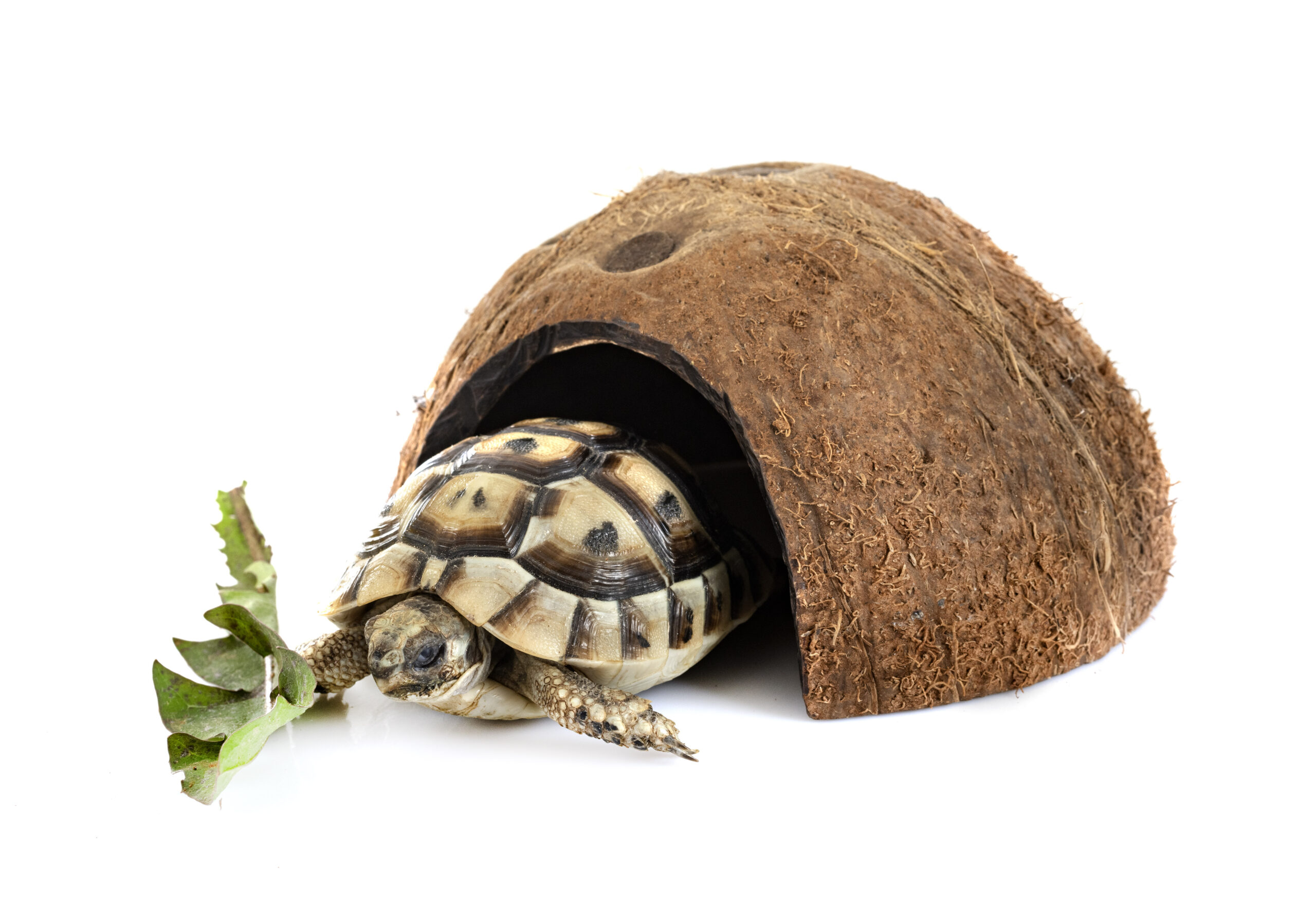Are you a proud owner of a Sulcata Tortoise? Do you want to understand their anatomy to ensure their proper care and maintenance? In this comprehensive guide, we will explore the external and internal anatomy of Sulcata Tortoises, their skeletal structure, health concerns, and care and maintenance.

External Anatomy of Sulcata Tortoises

Shell Structure and Components
The Sulcata Tortoise has a unique shell structure consisting of two parts: the carapace and plastron. The carapace is the dorsal part of the shell that covers the Sulcata’s back, while the plastron is the ventral part of the shell that covers the tortoise’s belly.
The carapace of a Sulcata Tortoise is made up of fused bones covered by a layer of keratin, the same protein that makes up human hair and nails. The keratin layer is divided into scutes, which are the individual plates that make up the shell.
Variations in Size, Shape, Coloration, and Pattern
Sulcata Tortoises can vary greatly in size, shape, coloration, and pattern. They have a large, barrel-shaped body, short legs, and a blunt head. The legs are adapted for digging, and the front legs are larger than the back legs. The head is flattened and wedge-shaped, with a beak-like mouth for biting and chewing vegetation.

Anatomy of a Sulcata Tortoise
- Discusses the external and internal anatomy, as well as the skeletal anatomy of the Sulcata Tortoise.
- Provides information on the care and maintenance of Sulcata Tortoise, including health concerns and preventative measures.
- Compares the Sulcata Tortoise anatomy to other tortoises and reptiles and emphasizes responsible ownership and conservation efforts.
Internal Anatomy of Sulcata Tortoises
Respiratory System
The respiratory system of a Sulcata Tortoise is unique compared to other animals. They have two lungs, but they are not connected to the ribs like in mammals. Instead, the lungs are attached to the inside of the carapace, and they expand and contract as the tortoise breathes.
Digestive System
The digestive system of a Sulcata Tortoise is adapted to their herbivorous diet. They have a simple stomach that ferments vegetation, a long and complex intestine, and a cloaca. The cloaca is a common opening for the digestive, urinary, and reproductive tracts.
Reproductive System
Sulcata Tortoises reach sexual maturity between 8 and 15 years old and can live up to 70 years in captivity. The male and female reproductive systems are located inside the shell, and the male has a longer tail than the female, which contains the reproductive organs.

Skeletal Anatomy of Sulcata Tortoises
Bone Structure and Components
The skeletal system of a Sulcata Tortoise is adapted for their unique movement and defense strategies. They have a broad, flattened spine, and their ribs are fused to the carapace for additional protection.
Adaptations for Movement and Defense
The Sulcata Tortoise has several adaptations that allow them to move and defend themselves effectively. Their limbs are covered in thick, scaly skin that protects them from injury while digging. They also have a sharp beak for biting and a strong neck for pushing and shoving.

Care and Maintenance of Sulcata Tortoises
Housing Requirements
Sulcata Tortoises require a spacious enclosure that allows them to move around freely. The enclosure should be at least four times the length of the tortoise and should have a substrate that is easy to clean. The enclosure should also have a basking area that reaches a temperature of at least 100°F and a UVB light source for proper calcium absorption.
Personal Story: The Importance of Proper Housing for Sulcata Tortoises
As a Sulcata Tortoise owner for over a decade, I’ve learned firsthand how important proper housing is for these amazing creatures. When I first got my Sulcata, I didn’t realize just how large they could grow and the impact that would have on their housing needs. I started with a small enclosure that worked fine for a baby tortoise, but as she grew, I quickly realized that I needed to upgrade her living space.
I researched extensively and found that Sulcata Tortoises need a lot of room to move around, and a small enclosure can lead to health problems like shell deformities and respiratory infections. I built a large outdoor enclosure with plenty of space for her to roam, a basking area for warmth, and a sheltered area for shade and protection from the elements.
The difference in my Sulcata’s health and behavior was immediate. She started eating more, moving around more, and seemed generally happier and more content. I also noticed fewer health problems, which I attributed to the improved living conditions.
Proper housing for Sulcata Tortoises is not just about providing enough space, but also about creating a safe and healthy environment that meets their specific needs. It’s important to use the right substrate, provide appropriate lighting and heating, and maintain proper humidity levels.
Through my experience, I’ve learned that investing in the right housing for a Sulcata Tortoise is crucial for their overall health and well-being.
Temperature and Humidity Needs
Sulcata Tortoises require a warm and humid environment to thrive. The temperature should be kept between 80-90°F during the day and 70-80°F at night. The humidity should be around 70% to prevent dehydration and shell problems.
Diet and Feeding Requirements
Sulcata Tortoises are herbivores and require a diet that is high in fiber and low in protein and fat. They should be fed a variety of vegetation, including grasses, leafy greens, and hay. They should also have access to clean water at all times.
Health Concerns of Sulcata Tortoises
Common Health Issues
Sulcata Tortoises are susceptible to several health issues, including respiratory infections, shell rot, and parasites. Respiratory infections are caused by poor husbandry and can be treated with antibiotics. Shell rot is caused by bacterial or fungal infections and can lead to severe shell damage. Parasites such as mites and ticks can also infect Sulcata Tortoises and cause health problems.
Signs of Illness
The signs of illness in a Sulcata Tortoise can vary depending on the condition. Some common signs of illness include lethargy, lack of appetite, runny nose, and swollen eyes. Changes in behavior or appearance should be taken seriously and require immediate veterinary attention.
Preventative Measures and Veterinary Care
Preventative measures such as regular check-ups and proper hygiene can help prevent health problems in Sulcata Tortoises. Veterinary care should be sought immediately if any signs of illness are noticed. Proper nutrition, temperature, and humidity levels are also crucial for maintaining good health in Sulcata Tortoises.
Comparison of Sulcata Tortoise Anatomy to Other Tortoise and Reptile Species
Similarities and Differences
| Anatomy Features | Sulcata Tortoise | Red Footed Tortoise | Bearded Dragon | Green Iguana |
|---|---|---|---|---|
| Shell Structure | Carapace and plastron | Carapace and plastron | No shell | No shell |
| Respiratory System | Two lungs attached to carapace | Two lungs attached to ribs | Lungs attached to ribs | Lungs attached to ribs |
| Digestive System | Simple stomach, long and complex intestine, cloaca | Simple stomach, long and complex intestine, cloaca | Simple stomach, short intestine, cloaca | Simple stomach, long intestine, cloaca |
| Limb Structure | Short legs with thick, scaly skin | Short legs with thin skin | Four legs with sharp claws | Four legs with sharp claws |
| Diet | Herbivorous | Omnivorous | Omnivorous | Herbivorous and occasionally omnivorous |
Sulcata Tortoises share some similarities in anatomy with other tortoise species, such as the carapace and plastron, but they also have unique adaptations, such as the respiratory system and limb structure. Compared to other reptiles, Sulcata Tortoises have a slower metabolism and a more complex digestive system due to their herbivorous diet.
Evolutionary History
The evolution of Sulcata Tortoise anatomy is closely tied to their environment and lifestyle. Their large size and protective shell allowed them to survive in the harsh desert environment of the Sahara. Over time, they have developed adaptations that allow them to move and defend themselves effectively.
Conclusion
Understanding the anatomy of Sulcata Tortoises is essential for providing them with the care and maintenance they need to thrive. By following the guidelines outlined in this guide, you can ensure that your Sulcata Tortoise lives a long and healthy life. Remember to seek veterinary care whenever necessary and always promote responsible ownership and conservation of their natural habitats.
Questions and Answers
What is the average size of a mature sulcata tortoise?
A mature sulcata tortoise can reach up to 30 inches in length.
How often should I feed my sulcata tortoise?
Feed your sulcata tortoise daily with a mix of hay, vegetables, and fruits.
Who should I consult for sulcata tortoise health concerns?
Consult a veterinarian who specializes in exotic animals.
What is the lifespan of a sulcata tortoise?
A sulcata tortoise can live up to 70 years in captivity.
How do I create a suitable habitat for my sulcata tortoise?
Provide a spacious enclosure with a basking area, hiding spots, and a shallow water dish.
Objection: Sulcata tortoises are low-maintenance pets.
While they are relatively low-maintenance, they require proper diet, enclosure, and veterinary care.







